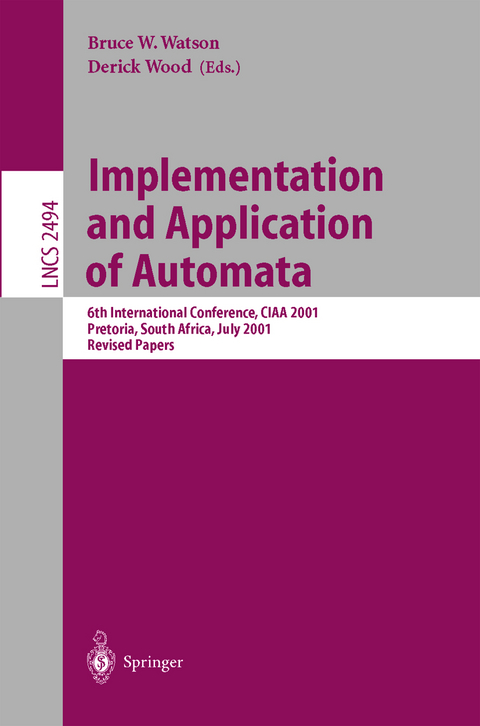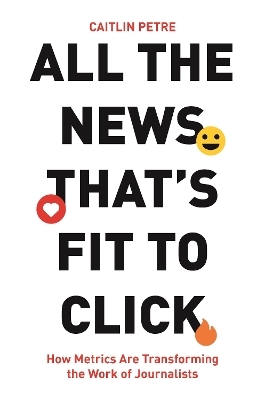TheSixthInternationalConferenceonImplementationandApplicationof- tomata(CIAA2001) the?rstoneheldinthesouthernhemisphere was heldattheUniversityofPretoriainPretoria,SouthAfrica,on23 25July2001. ThisvolumeofSpringer sLectureNotesinComputerSciencecontainsall thepapers(includingtheinvitedtalkbyGregorv. Bochmann)thatwerep- sentedatCIAA2001,aswellasanexpandedversionofoneoftheposterpapers displayedduringtheconference. Theconferenceaddressedtheissuesinautomataapplicationandimplemen- tion. Thetopicsofthepaperspresentedinthisconferencerangedfromautomata applicationsinsoftwareengineering,naturallanguageandspeechrecognition, andimageprocessing,tonewrepresentationsandalgorithmsfore?cientimp- mentationofautomataandrelatedstructures. Automatatheoryisoneoftheoldestareasincomputerscience. Researchin automatatheoryhasbeenmotivatedbyitsapplicationssinceitsearlystagesof development. Inthe1960sand1970s,automataresearchwasmotivatedheavily byproblemsarisingfromcompilerconstruction,circuitdesign,stringmatching, etc. Inrecentyears,manynewapplicationsofautomatahavebeenfoundin variousareasofcomputerscienceaswellasinotherdisciplines. Examplesofthe newapplicationsincludestatechartsinobject-orientedmodeling,?nitetra- ducersinnaturallanguageprocessing,andnondeterministic?nite-statemodels incommunicationprotocols. Manyofthenewapplicationscannotsimplyutilize theexistingmodelsandalgorithmsinautomatatheorytosolvetheirproblems. Newmodels,ormodi?cationsoftheexistingmodels,areneededtosatisfytheir requirements. Also,thesizesofthetypicalproblemsinmanyofthenewapp- cationsareastronomicallylargerthanthoseusedinthetraditionalapplications. Newalgorithmsandnewrepresentationsofautomataarerequiredtoreducethe timeandspacerequirementsofthecomputation. TheCIAAconferenceseriesprovidesaforumforthenewproblemsand challenges. Intheseconferences,boththeoreticalandpracticalresultsrelatedto theapplicationandimplementationofautomatawerepresentedanddiscussed, andsoftwarepackagesandtoolkitsweredemonstrated. Theparticipantsofthe conferenceserieswerefrombothresearchinstitutionsandindustry. Wethankalloftheprogramcommitteemembersandrefereesfortheire?orts inrefereeingandselectingpapers. Thisvolumewaseditedwithmuchhelpfrom NanetteSaesandHannekeDriever,whiletheconferenceitselfwasrunsmoothly withthehelpofElmarieWillemse,NanetteSaes,andTheoKoopman. VI Foreword WealsowishtothanktheSouthAfricanNRF(forfundingairfares)andthe DepartmentofComputerScience,UniversityofPretoria,fortheir?nancialand logisticsupportoftheconference. WealsothanktheeditorsoftheLectureNotes inComputerScienceseriesandSpringer-Verlag,inparticularAnnaKramer,for theirhelpinpublishingthisvolume. October2002 BruceW. Watson DerickWood CIAA 2001 Program Committee BernardBoigelot Universit edeLiege,Belgium Jean-MarcChamparnaud Universit edeRouen,France MaximeCrochemore UniversityofMarne-la-Vall ee,France OscarIbarra UniversityofCaliforniaatSantaBarbara,USA LauriKarttunen XeroxPaloAltoResearchCenter,USA NilsKlarlund AT&TLaboratories,USA DenisMaurel Universit edeTours,France MehryarMohri AT&TLaboratories,USA Jean-EricPin Universit eParis7,France KaiSalomaa Queen sUniversity,Canada HelmutSeidl TrierUniversity,Germany BruceWatson(Chair) UniversityofPretoria,SouthAfrica EindhovenUniversity,TheNetherlands DerickWood(Co-chair) HongKongUniversityofScience andTechnology,China ShengYu UniversityofWesternOntario,Canada Table of Contents UsingFiniteStateTechnologyinNaturalLanguageProcessingofBasque. . . 1 I nakiAlegria,MaxuxAranzabe,NereaEzeiza,AitzolEzeiza, andRubenUrizar CascadeDecompositionsareBit-VectorAlgorithms. . . . . . . . . . . . . . . . . . . . . . . . 13 AnneBergeronandSylvieHamel SubmoduleConstructionandSupervisoryControl:AGeneralization. . . . . . . 27 Gregorv. Bochmann CountingtheSolutionsofPresburgerEquations withoutEnumeratingThem. . . . . . . . . . . . . . . . . . . . . . . . . . . . . . . . . . . . . . . . . . . . . . . 40 BernardBoigelotandLouisLatour Brzozowski sDerivativesExtendedtoMultiplicities. . . . . . . . . . . . . .
Using Finite State Technology in Natural Language Processing of Basque.- Cascade Decompositions are Bit-Vector Algorithms.- Submodule Construction and Supervisory Control: A Generalization.- Counting the Solutions of Presburger Equations without Enumerating Them.- Brzozowski's Derivatives Extended to Multiplicities.- Finite Automata for Compact Representation of Language Models in NLP.- Past Pushdown Timed Automata.- Scheduling Hard Sporadic Tasks by Means of Finite Automata and Generating Functions.- Bounded-Graph Construction for Noncanonical Discriminating-Reverse Parsers.- Finite-State Transducer Cascade to Extract Proper Names in Texts.- Is this Finite-State Transducer Sequentiable?.- Compilation Methods of Minimal Acyclic Finite-State Automata for Large Dictionaries.- Bit Parallelism - NFA Simulation.- Improving Raster Image Run-Length Encoding Using Data Order.- Enhancements of Partitioning Techniques for Image Compression Using Weighted Finite Automata.- Extraction of ?-Cycles from Finite-State Transducers.- On the Size of Deterministic Finite Automata.- Crystal Lattice Automata.- Minimal Adaptive Pattern-Matching Automata for Efficient Term Rewriting.- Adaptive Rule-Driven Devices - General Formulation and Case Study.- Typographical Nearest-Neighbor Search in a Finite-State Lexicon and Its Application to Spelling Correction.- On the Software Design of Cellular Automata Simulators for Ecological Modeling.- Random Number Generation with ?-NFAs.- Supernondeterministic Finite Automata.
| Erscheint lt. Verlag |
16.1.2003
|
| Reihe/Serie |
Lecture Notes in Computer Science
|
| Zusatzinfo |
X, 294 p. |
| Verlagsort |
Berlin |
| Sprache |
englisch |
| Maße |
155 x 235 mm |
| Gewicht |
431 g |
| Themenwelt
|
Informatik ► Theorie / Studium ► Algorithmen |
| Informatik ► Theorie / Studium ► Künstliche Intelligenz / Robotik |
| Schlagworte |
Algorithm analysis and problem complexity • algorithms • Automata • Automata Computations • Automata Theory • Cellular Automata • Finite Automata • Formal Languages • formal methods • Foundations • Implementations • Modeling • natural language • Natural Language Processing • protocols • proving • Simulation • Statecharts • State Complexity |
| ISBN-10 |
3-540-00400-9 / 3540004009 |
| ISBN-13 |
978-3-540-00400-4 / 9783540004004 |
| Zustand |
Neuware |



